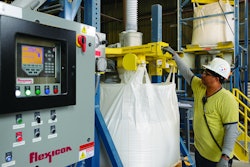But that’s changed in the last few years as people consider creating their own start-up food companies. The combination of state-level “Cottage Food” laws and increased interest in locally grown products has caused an increase in homemade and Farmer’s Market products for retail sale.
There are 42 states that have passed some sort of Cottage Industry Food Law that allows production of certain food products in home kitchens for retail sale. Each state has its own interpretation of what specific products they allow, but generally they allow home kitchens to make and sell food products without the costly oversight and licensing required by commercial food producers. The concept is to use home kitchens to produce low-risk foods in controlled quantities to lower potential risks in the process. The foods that are allowed are mainly high-acid products, baked goods, or low-moisture content products, so the microbial hazard risk is low. Each state has different regulations, so you should check with your state’s specific law before you start a business; for example, California limits gross annual sales to $50,000 and interstate sales is not permitted. Other states limit factors like the number of employees, size of the facility and specific information on the label.
Retail sales are generally at Farm Markets, but many products are being sold to restaurants and caterers as artisanal products. The local sourcing of these products provides a level of quality and freshness not easily found in normal food distribution systems and this appeals to “Locavors.” The concept is to allow farm producers to add value to their products through minimal processing and packaging and benefit from the added income. The concept also serves as an incubator for small businesses. If the product is successful then there is the opportunity to take the product to the next level beyond local distribution and sales. This is a path entrepreneurs can use to easily enter the market to test their product’s acceptance. This mimics a simple grass roots business development system used in other industries that reduces the barriers to market entry and helps start-ups develop, ultimately adding to the state’s economic well-being.
In combination with the relaxed regulations for small food producers, Farm Markets are creating retail outlets for these products, which is the second half of the equation. They are the traditional Farm Markets on the farmer’s property and more recently urban Farmers Markets with multiple stalls in a central shopping location popping up one or two days a week. Last year according to the USDA 167,000 farms engaged in this activity with a dollar value of $8.7 billion dollars. This market is broken down into 3 categories:
• Direct to consumer $3 billion
• Institutions and Intermediaries 3.4 billion
• Restaurants, caterers, and supermarkets $2.3 billion
This market follows the “Buy Local” trend as 81% of these sales are made within 20 miles of the consumer’s home.
Companies on the supply side of packaging can address this emerging market by recognizing what types of packages and packaging technologies it requires. Package suppliers should be aware that this is a non-traditional market segment as sales volumes are normally very low and to a single customer.
Package attributes that may be in demand include these:
• Increased variety of bottles and jars in glass and plastic for hot-fill applications
• Wide-mouth configurations for less drips in filling
• Lids in many styles to augment dosing, measuring, and use
• Inexpensive high-quality heat sealers would be a boon to home food packaging, and the heatsealer should be able to handle mono-films and heavy laminations
• Variety of formed pouches of different materials and geometries (Stand-up, liquid fitments attached, high-barrier materials)
• Label stock where product-specific information can be added on home printers
These are just a few ideas that may be useful to at-home packagers. Another thought is that this local food production and packaging could be viewed as a means to improve food protection at the household level and could be applied to developing areas where food loss is a key concern. Save Food is an international effort to bring these types of ideas to the table, and maybe the Packaging community could be instrumental in this effort.
Fritz Yambrach ([email protected]) is Director of Packaging at San Jose State University.


























